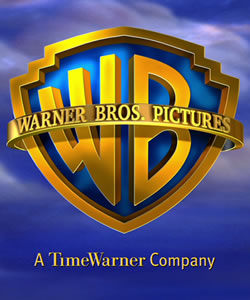 Spanish mobile content giants Zed is ramping it up in recent weeks. First, it bought UK aggregator / distributor Player X (who just snapped up another chunk of Orange UK’s business), now it is said to have taken a majority stake in a Russian aggregator, namely Temafon (here’s also a link to the Russian article). Temfon is apparently the MCP (Master Content Provider) to the no. 2 operator in Russia, Beeline (or VimpelCom by corporate name).
Spanish mobile content giants Zed is ramping it up in recent weeks. First, it bought UK aggregator / distributor Player X (who just snapped up another chunk of Orange UK’s business), now it is said to have taken a majority stake in a Russian aggregator, namely Temafon (here’s also a link to the Russian article). Temfon is apparently the MCP (Master Content Provider) to the no. 2 operator in Russia, Beeline (or VimpelCom by corporate name).
This would add to their Russian activities that they had inherited via their acquisition of Monstermob, which had a subsidiary in Russia, too, namely Infon, which is said to be the leading aggregator in Russia. Now, the Russian market is a bit intransparent from the outside: a lot of the revenues are being made via data charge sharing rather than download fees. Data charges tend to be rather high, which is why operators appear to let aggregators take the lead in provisioning content. The operators get their share via the data charges anyway… With Infon and now (apparently) a majority stake in Temfon, Zed is positioning itself well, it seems, right at the sweet spot of the Russian market: not by trying to sell expensive (licensed) games via portals but by shipping its predominantly generic, home-made content through the aggregation models prevalent there. Smart!
So where does the whole spending spree that saw Monstermob (and, as part thereof, 9Squared in the US, Infon in Russia and a few more here and there), mobile Flash specialists Mobitween, Player X (with Spanish developer Gaelco in it) and now Temfon in Russia lead Zed?
Monstermob bolstered its D2C business (which was part of a larger consolidation in the space in which Buongiorno also participated). Mobitween helped them in their production efforts and spearheading Flash (which powers e.g. the Mobigamz portal on Verizon Wireless, Player X made sense for their operator relationships (O2 and Orange UK, etc.) and Temfon cements their position in what is likely to become a very large market. The closeness to Beeline will be most welcome, too.
And this, I would posit, currently drives the market of the big aggregators: get close to the operators. All of the larger players, Fox Mobile/Jamba, Buongiorno, Arvato Mobile and now Zed are concentrating a lot on the creation of MCP relationships with the carriers. It makes a whole lot of sense to them of course: the D2C market is cut-throat and low-margin because of the marketing spend required to attract attention from fairly brand-agnostic users. The models introduced to fight attrition, namely the infamous subscriptions, have not helped the name of D2C offerings either. However, since all the aggregators possess powerful content delivery and management platforms as part of their (original) core business, the incremental cost for them to run operator “decks” is lower than for pureplay platform companies who cannot cross-collateralize their platform costs by D2C business. Therefore, the big aggregators should be able to make a profit out of lower margins than others.
And Zed has – again – asserted its muscle and plays in the middle of it!
Zed do go a bit further though (in Russia and elsewhere) in that services extend significantly beyond simple content aggregation. Zed is introducing mobile services that are more comprehensive, from user-based SMS services to multi-platform entertainment formats (e.g. the “Instantly Rich” TVformat). But this probably deserves another post focussed on convergence… 😉

 Spanish mobile content giants Zed is ramping it up in recent weeks. First, it
Spanish mobile content giants Zed is ramping it up in recent weeks. First, it  They’re coming… The big entertainment players are increasingly gearing up to take charge of their mobile destinies. Whereas previously a lot of the big movie studios would simply license out the rights to mobile applications and games to independent game companies (Gameloft and Glu having been particularly active), they seem to increasingly embrace the medium themselves. Sony, Disney, Paramount – they have all recently been self-publishing on the – erm – iPhone. Other mobile platforms? The 98% non-iPhone handsets? Erm, maybe later…
They’re coming… The big entertainment players are increasingly gearing up to take charge of their mobile destinies. Whereas previously a lot of the big movie studios would simply license out the rights to mobile applications and games to independent game companies (Gameloft and Glu having been particularly active), they seem to increasingly embrace the medium themselves. Sony, Disney, Paramount – they have all recently been self-publishing on the – erm – iPhone. Other mobile platforms? The 98% non-iPhone handsets? Erm, maybe later… Consolidation in the mobile marketing space: German mobile marketing group
Consolidation in the mobile marketing space: German mobile marketing group